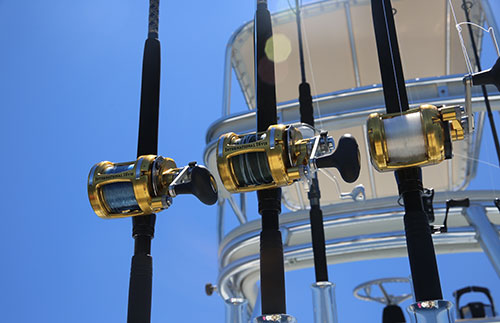NC Agencies At Odds With Each Other Over Flounder Restrictions
The fishing community in North Carolina, both recreational and commercial, is once again embroiled in a controversy over fishery management. This time, the issue centers around the state’s flounder fishery and the regulations governing it.
The latest battle concerns whether there will be a recreational flounder season in North Carolina waters. The issue intensified last week when the state Wildlife Resources Commission voted to open a four-day season in waters under their jurisdiction in September. In recent days, the two key agencies involved have exchanged heated memos that have amounted to an email shouting match, as shown below.
After years of a devastating reduction in North Carolina’s flounder population, along with significant declines in other fish species, the people of North Carolina are left with this: two key agencies engaged in an online brawl. This situation reflects a lack of professionalism and hinders the search for a positive solution. The frustration extends beyond the fishing community to the broader population of North Carolina, who are fed up with the ongoing issues surrounding coastal fishery management and the failures of the state’s agencies. Over recent years there have and been numerous private groups and citizens that have dedicated their time, money and efforts to help resolve this serious fishery decline and mis-management to only find little or no cooperation from these state agencies.
It’s time for North Carolina and its agencies to get their act together and bring professionals to the table with a recovery plan before it’s too late. The clock is ticking!
Captain Tim Wilson
Editor & Founder, Saltwater Angler & Sportsman Magazine
Timeline of actions:
1) As part of the approved 2022 Fishery Management Plan for flounder, the annual commercial allocation for the years 2022-2024 was set at 70% and the recreational allocation was set at 30%. This was based on the ratio of harvest in 2017 (2 million pounds were harvested that year with the breakdown 70% commercial and 30% recreational). The allocation ratio is scheduled to change per the approved plan to 60:40 in 2025, and 50:50 in 2026.
2) The Fishery Management Plan approved a 72% reduction in harvest from the 2017 total to rebuild the stock, and the Division of Marine Fisheries set conservation quotas accordingly.
3) Due to recreational overages estimated from the 2023 season and associated paybacks, the Division of Marine Fisheries will not open the 2024 recreational harvest season for flounder.
4) The commercial fishery will open in 2024 because this sector did not significantly exceed their 2023 quota.
5) The Wildlife Resources Commission, which does not monitor or manage flounder, was asked by the Division of Marine Fisheries to promulgate rules to close the recreational flounder season in Inland jurisdictions to match Joint and Coastal jurisdictional rules.
6) The Wildlife Resources Commission sent a letter to the Marine Fisheries Commission requesting that the harvest allocation timelines be accelerated to achieve 50:50 this year to allow for a recreational harvest season. The Marine Fisheries Commission did not act upon this request.
7) This week, the Wildlife Resources Commission rejected the request to close the flounder season in Inland waters, and instead established their own 4-day hook-and-line harvest season for flounder. The season will be split to include September 1-2 and September 7-8. The daily creel limit is 1 fish, with a 15-inch size limit.
8) The Wildlife Resources Commission has extended their hook-and-line authority to also allow recreational harvest in Joint jurisdictional waters.
9) The Marine Fisheries Commission expressed their disappointment in this action, and has informed the Wildlife Resources Commission that Marine Patrol officers will write tickets to any angler possessing flounder in Joint jurisdictional waters.
10) The Wildlife Resources Commission will monitor harvest during their 4-day season by conducting intensive creel surveys (angler interviews) at boat ramps scattered along the coast. How they plan to use this data, considering they are not part of the flounder management process, is unknown.
Most from this category







